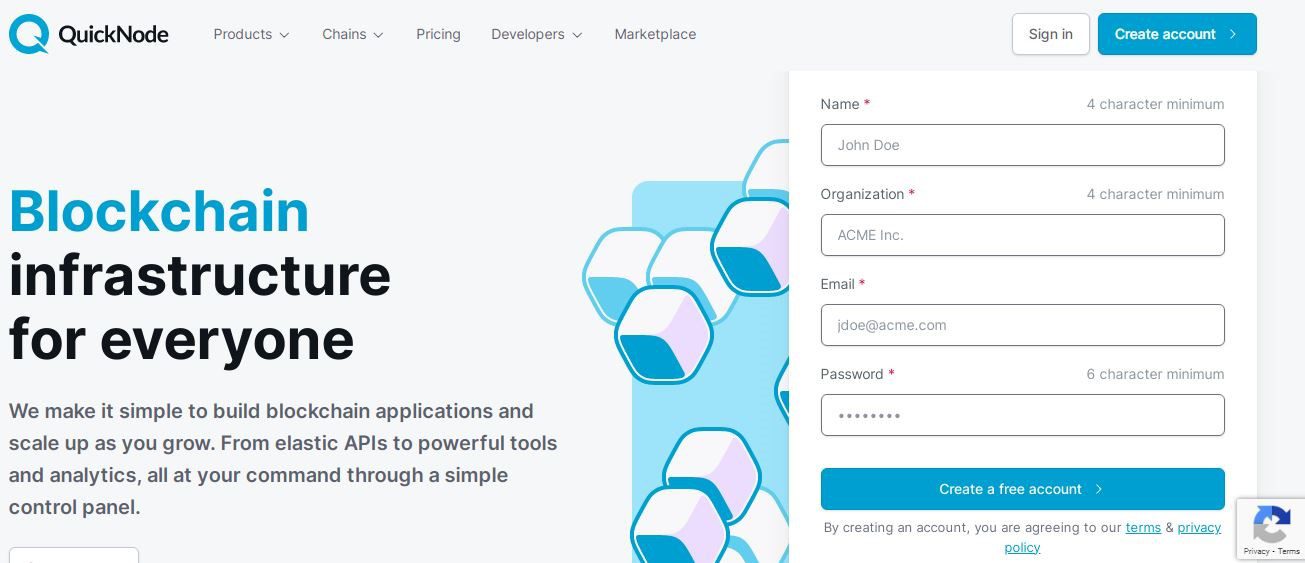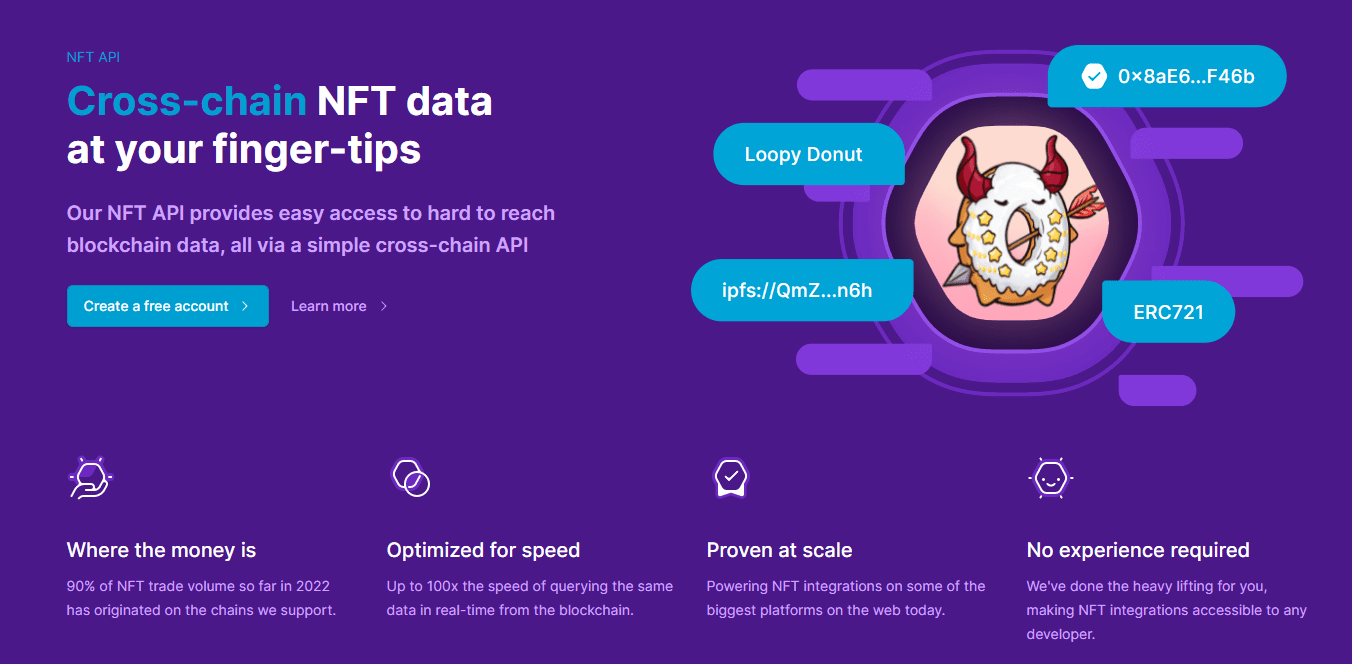Why QuickNode is Leading Infrastructure Platform for Web3 Applications
Web3, also known as the decentralized web, refers to the next generation of the internet.
Table of Contents
Its built on decentralized technologies such as blockchain and peer-to-peer networks.

| Read: 3 Best “Watch to Earn” Cryptocurrency Projects to Consider in 2023
- It is an evolution of the current web (Web2), which is characterized by centralized platforms and services controlled by a few large corporations
- Web3 aims to democratize the internet by giving individuals more control over their data and online interactions. It allows for decentralized applications (dApps) that are transparent, secure, and censorship-resistant.
- Web3 technologies enable new use cases such as decentralized finance (DeFi), non-fungible tokens (NFTs), and decentralized social networks, to name a few.
- Building on Blockchain is a tricky task for small businesses and developers.
- Developers building Web3 applications face several challenges, including:
- Complexity:
Web3 technologies such as blockchain, smart contracts, and peer-to-peer networks can be complex and difficult to understand.
Developers need to have a deep understanding of these technologies to build successful applications.
- Lack of Standardization:
There is no universal standard for Web3 development, which can make it challenging for developers to build applications that are interoperable with other platforms and services.
- Security:
Web3 applications are often handling sensitive data and assets such as cryptocurrency, which requires a high level of security.
Developers need to ensure that their applications are secure and protected from potential hacks and attacks.
- Scalability:
Web3 applications can face scalability issues due to the limited processing power and storage capacity of decentralized networks.
Developers need to design their applications to handle large volumes of transactions and data.
- User Experience:
Web3 applications can have complex user interfaces and require users to have a certain level of technical knowledge to use them.
Developers need to focus on creating user-friendly applications that are accessible to a wider audience.
- Here QuickNode solves all of these problems for developers by providing infrastructure API to build their blockchain-based applications.
What is QuickNode?
QuickNode was founded in 2017 by Dmitry Shklovsky and Viktor Bunin.
- QuickNode is a leading infrastructure platform for Web3 developers that offers a comprehensive solution to the challenges of building decentralized applications.
- It provides a range of services including nodes, APIs, and developer tools that enable developers to build, test, and deploy their applications quickly and efficiently.

| Read: GA4 Google Analytics: Guide to the Latest Version of Google’s Analytics Platform
Small businesses and developers can rely on the platform for scalability as it has an automatic scaling solution according to your need for traffic and solutions.
- Including Ethereum, Gnosis (xDAI), Polygon, Binance Smart Chain, Avalanche, Fantom, Solana, Optimism, Arbitrum, Algorand, Harmony, Celo, Terra, and Bitcoin networks, QuickNode is a high-performance gateway to more than 15 blockchains.
- QuickNode worldwide network of nodes that are globally spread across 10+ regions, geo-balanced, multi-cloud, highly available, and auto-scaling are behind every QuickNode API endpoint and are available at your whim.
- QuickNode is backed by well-known names like Ycombinator, Tiger Global, SoftBank, etc.
- XDAI, ALGO, BTC, SOL, FTM, OP, ARB, CELO, BSC, MATIC, ONE, AVAX, ETH MainNet, and TestNet networks are instantly accessible through this infrastructure API platform.
- It offers a robust infrastructure for smooth building. Every request received to your QuickNode API endpoint is intelligently routed to the closest node in the US East, West, UK, Europe, India, Singapore, Tokyo, and Sydney, with automatic failover in the event of a problem.
QuickNode Features
- Ethereum Webhooks
- Token API
- NFT API
- Marketplace for add-on infrastructure tools
- Security with multiple Lockdown and open-ups for endpoints
- Analytics to monitor nodes.
- Archive node Data
QuickNode handles more than 200 billion+ API requests, offers 99.99% avaliability, 2.5X faster API response and 24/7 support.
Why developers choose QuickNode?
Its Easy to Use, Fast and Reliable, Secure, Scalable and Affordable.
There are some Alternatives of QuickNode are also avalibale in market like Infura, Alchemy, and NodeFactory.
These companies are also working on the footprints of QuickNode.
- QuickNode provides immediate access to Enterprise-Grade Infrastructure, the same as that used by many other companies, like Coinbase, Adobe, OpenSea, Chainlink, and 1inch for small business and web3 developers.
- The platform has all the needed documentation and guides for every query that even a new developer would have.
- QuickNode pricing is fare in Discover, Build, Scale, and Enterprise packages where Discover is a Free package.
- QuickNode makes it simple to power your blockchain applications and scale up as you grow.
- If you need the processing power of 10 nodes to manage a surge in traffic, QuickNode provide it instantly, and later if you want to return to 3 nodes, the platform makes it easier to go back with no harm.
- From elastic APIs to powerful tools & analytics, the API platform provides all at your command through a simple control panel.
- Developers can compare any nodes against QuickNode by dropping any infrastructure provider endpoint.
- It monitors performance, average latency, response time, and HTTP response codes to ensure that every request is serviced swiftly and reliably.
- QuickNode has products like Core API, Token API, and NFT API along with the recently launched Marketplace.

How to get start with QuickNode?
Finally, you can sign up on the platform by creating a new account and choosing a free plan if you are just testing in simple steps:
1. Sign up for an account:
To use QuickNode, you first need to sign up for an account on their website.
You can choose from a range of pricing plans that suit your needs and budget.
2. Create a Node:
Once you have signed up for an account, you can create a node on QuickNode’s platform.
This involves selecting the blockchain network you want to use and the location of your node.
QuickNode offers a range of blockchain networks, including Ethereum, Binance Smart Chain, and xDai
3. Connect to QuickNode’s API:
Once your node is set up, you can connect to QuickNode’s API and start building your Web3 application.
QuickNode’s API allows you to interact with the blockchain network using popular programming languages such as JavaScript, Python, and Ruby.
4. Test and Deploy Your Application:
After you have built your Web3 application, you can test it on QuickNode’s platform and deploy it to the blockchain network.
QuickNode’s developer tools and resources make it easy to test and debug your application, so you can ensure that it is running smoothly.

Use Cases of QuickNode
QuickNode is a versatile infrastructure platform that can be used for a wide variety of Web3 applications.
Here are some of the most popular use cases of QuickNode:
1. Decentralized Finance (DeFi):
QuickNode is used by many DeFi companies, including MakerDAO, Compound Finance, and Uniswap.
These companies use QuickNode’s reliable infrastructure to power their decentralized lending and trading platforms.
2. Non-Fungible Tokens (NFTs):
QuickNode is used by several NFT marketplaces, including OpenSea and SuperRare.
These marketplaces use QuickNode’s infrastructure to handle the high volume of transactions and ensure that their NFTs are authenticated and secured on the blockchain.
3. Gaming:
QuickNode is used by gaming companies like Enjin, which builds blockchain-based gaming platforms that allow players to own and trade in-game assets.
QuickNode’s high-speed infrastructure and global network ensure that Enjin’s platform can handle large numbers of players and transactions.
4. Supply Chain Management:
QuickNode is used by companies like Ambrosus, which uses blockchain technology to track and verify food and pharmaceutical supply chains.
QuickNode’s secure and scalable infrastructure ensures that Ambrosus can handle the high volume of data and transactions required to track products from production to delivery.
5. Other Use Cases:
QuickNode is used by many other Web3 companies for various use cases, including prediction markets (Augur), social media (Peepeth), and decentralized identity (uPort).

Final Thoughts
- In this way, Quicnodes makes it easy to scale up blockchain applications as you grow.
- Its first global network and high-speed infrastructure ensure that Web3 applications can handle the high volume of transactions required for blockchain-based applications to function efficiently.
- QuickNode’s platform is secure and scalable, providing Web3 developers with a reliable and stable platform to build their applications.
- With QuickNode, developers can focus on building innovative and cutting-edge Web3 applications, while leaving the infrastructure management to the experts.
Disclaimer
- It is important to note that the information provided in this article about QuickNode is based on publicly available information and the opinions expressed are those of the author.
- While we have made every effort to ensure that the information presented is accurate and up-to-date, we cannot guarantee the accuracy, completeness, or reliability of the information provided.
- Additionally, it is important to note that blockchain and Web3 technologies are rapidly evolving, and the information presented in this article may become outdated over time.
- Readers should conduct their own research and seek professional advice before making any decisions related to the use of QuickNode or any other blockchain infrastructure provider.
- Furthermore, the mention of any specific companies, projects, or technologies is not intended as an endorsement, and readers should conduct their own research and due diligence before making any investment or business decisions related to those entities.


